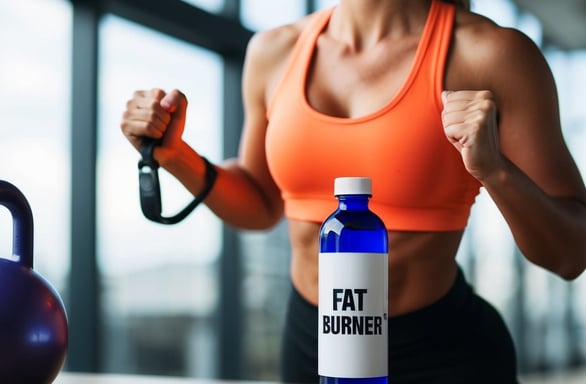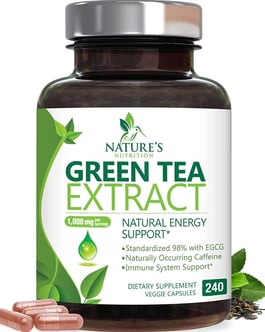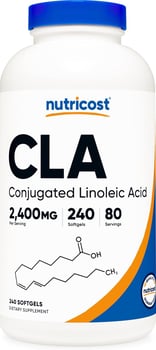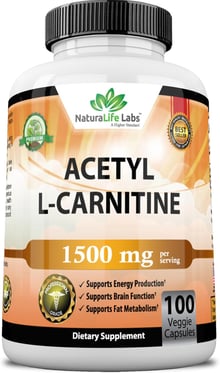Fat Burners That Actually Work: Science-Backed Supplements for Effective Weight Loss
Fat burners have become increasingly popular among those seeking to shed excess weight quickly. These supplements claim to boost metabolism, increase fat oxidation, and suppress appetite. While many products make bold promises, only a select few have scientific evidence to support their effectiveness.
12/28/20246 min read


Fat burners have become increasingly popular among those seeking to shed excess weight quickly. These supplements claim to boost metabolism, increase fat oxidation, and suppress appetite. While many products make bold promises, only a select few have scientific evidence to support their effectiveness.
The most effective fat burners contain ingredients like caffeine, green tea extract, and capsaicin. These compounds have been shown to modestly increase calorie burning and fat oxidation in clinical studies. However, it's important to note that even the best fat burners produce relatively small effects on their own.
For optimal results, fat burners should be combined with a healthy diet and regular exercise routine. They may provide an extra edge for those already following a comprehensive weight loss plan, but they are not magic pills that melt away fat effortlessly. As with any supplement, it's advisable to consult a healthcare professional before adding fat burners to your regimen.
Understanding Fat Burners
Fat burners are dietary supplements designed to support weight loss efforts. They aim to increase metabolism, reduce fat absorption, and promote fat oxidation.
Mechanism of Action
Fat burners typically work through several pathways. They may increase thermogenesis, raising body temperature and calorie burn. Some ingredients boost energy expenditure by enhancing metabolism. Others suppress appetite, helping control calorie intake.
Certain fat burners inhibit fat absorption in the digestive tract. This process prevents some dietary fat from being stored in the body. Additionally, some compounds promote lipolysis, the breakdown of stored fat for energy use.
Types of Fat Burners
Fat burners come in various forms, each targeting different aspects of weight loss. Thermogenics increase heat production and metabolic rate. Appetite suppressants help reduce food cravings and calorie consumption. Carb blockers limit carbohydrate absorption, while fat blockers inhibit fat absorption.
Stimulant-based fat burners contain caffeine or other stimulants to boost energy and metabolism. Non-stimulant options focus on fat oxidation without causing jitters or sleep disturbances. Some products combine multiple mechanisms for a comprehensive approach.
Natural vs. Synthetic Options
Natural fat burners derive from plant-based sources or naturally occurring compounds. Examples include green tea extract, caffeine from coffee beans, and capsaicin from chili peppers. These options often have fewer side effects and are generally well-tolerated.
Synthetic fat burners are laboratory-created compounds designed to mimic or enhance natural fat-burning processes. They may offer more potent effects but can also carry higher risks of side effects. Examples include phentermine and ephedrine (now banned in many countries).
Some fat burners combine natural and synthetic ingredients to balance efficacy and safety. It's crucial to consult a healthcare professional before using any fat burner, especially synthetic options.
Efficacy of Key Ingredients
Several ingredients in fat burners have shown promise in supporting weight loss efforts. Scientific studies have examined their effects on metabolism, fat oxidation, and appetite suppression.
Green Tea Extract
Green tea extract contains catechins, particularly epigallocatechin gallate (EGCG), which may boost metabolism. Research suggests it can increase fat oxidation and energy expenditure.
A study in the American Journal of Clinical Nutrition found that green tea extract increased 24-hour energy expenditure by 4%. This equated to an additional 70-100 calories burned per day.
Green tea's caffeine content also contributes to its fat-burning potential. The combination of caffeine and catechins appears more effective than either component alone.
Caffeine
Caffeine is a well-known stimulant that can enhance fat burning and boost metabolism. It increases the release of catecholamines, hormones that mobilize fat stores for energy.
A meta-analysis of 12 studies found that caffeine intake significantly increased energy expenditure and fat oxidation. The average increase in metabolic rate was about 4-5%.
Caffeine also suppresses appetite and may help reduce calorie intake. Its effects are most pronounced in people not habituated to regular caffeine consumption.
Conjugated Linoleic Acid
Conjugated linoleic acid (CLA) is a type of fatty acid found in meat and dairy products. It has gained attention for its potential fat-reducing properties.
Some studies have shown CLA can reduce body fat mass and increase lean body mass. A meta-analysis of 18 studies found that CLA supplementation led to modest fat loss compared to placebo.
The effects of CLA appear to be most significant in the first six months of supplementation. Long-term efficacy and safety require further research.
L-Carnitine
L-carnitine is an amino acid derivative that plays a role in fat metabolism. It helps transport fatty acids into mitochondria, where they can be burned for energy.
Research on L-carnitine's fat-burning effects has produced mixed results. Some studies show modest benefits for weight loss and body composition.
A review of nine studies found that individuals lost an average of 1.3 kg more weight with L-carnitine supplementation compared to placebo. The effects were more pronounced in overweight individuals.
L-carnitine may be most effective when combined with diet and exercise. Its impact on fat burning appears to be greater in individuals with carnitine deficiency.
Safety and Side Effects
Fat burners can pose potential health risks and interact with certain medications. Proper usage and medical consultation are crucial for minimizing adverse effects.
Potential Risks
Fat burners may cause cardiovascular issues like increased heart rate and blood pressure. Some users experience digestive problems such as nausea, diarrhea, or stomach discomfort.
Sleep disturbances and anxiety are common side effects due to stimulant ingredients. Headaches and dizziness can occur, especially in sensitive individuals.
Long-term use of certain fat burners may lead to liver damage or kidney problems. Dehydration is a risk, particularly when combined with intense exercise.
Interactions with Other Medications
Fat burners can interfere with various prescription medications. They may enhance the effects of blood thinners, increasing bleeding risk.
Some ingredients interact with antidepressants, potentially causing dangerous spikes in blood pressure or serotonin levels. Diabetic medications' effectiveness can be altered by fat burners.
Certain fat burners may reduce the efficacy of birth control pills. People taking thyroid medications should exercise caution, as some ingredients can affect thyroid function.
It's essential to consult a healthcare provider before starting any fat burner regimen, especially for those with pre-existing conditions or on medication.
Lifestyle and Behavioral Factors
Successful fat burning relies on more than just supplements. Diet choices and exercise habits play crucial roles in achieving weight loss goals.
Importance of Diet
A balanced diet forms the foundation of effective fat burning. Consuming whole foods, lean proteins, and plenty of vegetables supports metabolism and helps create a calorie deficit. Limiting processed foods, sugars, and excessive carbohydrates can enhance fat loss efforts.
Portion control is key. Using smaller plates and measuring servings helps manage calorie intake. Staying hydrated with water supports metabolic functions and can reduce feelings of hunger.
Meal timing also impacts fat burning. Eating regular, balanced meals throughout the day keeps metabolism active. Some find success with intermittent fasting, which can boost fat oxidation when done properly.
Exercise Synergy
Physical activity amplifies the effects of fat burners and dietary changes. Cardiovascular exercise burns calories directly and can increase metabolism for hours afterward. Aim for at least 150 minutes of moderate-intensity aerobic activity per week.
Strength training is equally important. Building muscle mass increases resting metabolic rate, helping burn more calories even when inactive. Incorporate resistance exercises 2-3 times weekly, targeting all major muscle groups.
High-intensity interval training (HIIT) can be particularly effective. Short bursts of intense activity followed by rest periods boost metabolism and fat burning. Even brief HIIT sessions can yield significant results.
Consistency is crucial. Regular exercise creates a compounding effect, enhancing overall fat loss over time.
Selecting the Right Fat Burner
Choosing an effective fat burner requires careful consideration of quality standards and user experiences. These factors help identify products that are both safe and potentially beneficial for weight loss goals.
Quality Standards
Reputable fat burners undergo rigorous testing and adhere to strict manufacturing guidelines. Look for products certified by third-party organizations like NSF International or USP. These certifications ensure the supplement contains the ingredients listed on the label in the stated amounts.
Check for Good Manufacturing Practices (GMP) compliance. This indicates the product was made in a facility that follows FDA-approved quality control procedures.
Examine the ingredient list carefully. Avoid supplements with proprietary blends that don't disclose specific amounts of each component. Opt for products with scientifically-backed ingredients like green tea extract, caffeine, or conjugated linoleic acid (CLA).
User Reviews and Testimonials
While individual results may vary, user reviews can provide valuable insights into a fat burner's effectiveness. Look for detailed testimonials that describe specific weight loss outcomes and timeframes.
Pay attention to mentions of side effects or adverse reactions. These can indicate potential issues with the product's safety or tolerability.
Consider the overall pattern of reviews rather than focusing on a few extreme opinions. A consistently positive feedback trend suggests a higher likelihood of efficacy.
Be cautious of reviews that seem too good to be true or appear scripted. Authentic testimonials often include both pros and cons of the product.






Additional info
Social media coming soon!
Contact us
Newsletter coming soon!
© 2024. All rights reserved.
